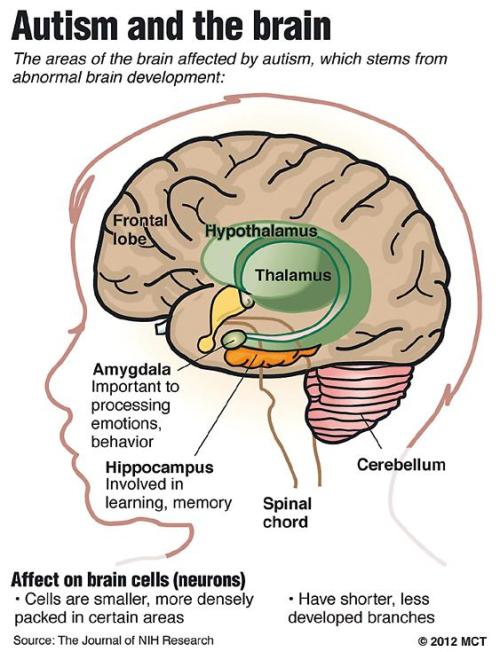
KANSAS CITY, Missouri ― Lauren Shouse wonders why her third child, Luke, is autistic. Was it his difficult birth? Was it something inherited that made her 6-year-old so stubborn and unwilling to speak?
“You would like to know what causes it so you can do all you can to prevent it,” said Shouse, of Weston, Mo. “It would be wonderful if we knew why.”
Medical researchers have the same hope, made all the more urgent Thursday with the release of new numbers showing that the prevalence of autism among the nation’s children continues its relentless climb.
One in every 88 children has been diagnosed with an autism spectrum disorder by the time they turned 8, according to a report by the Centers for Disease Control and Prevention. The report looks at 2008 data from 14 communities, including the St. Louis area.
That’s an increase in prevalence of 23 percent compared to data from just two years earlier, in 2006, and a 78 percent increase from the first year CDC gathered this data in 2002.
In 2002, fewer than one in 150 8-year-olds had been diagnosed with autism.
“The United States is experiencing an autism epidemic,” said Mark Roithmayr, president of the advocacy group Autism Speaks. “It is a national emergency in need of a national plan.”
The CDC report uses extensive data collected from children’s medical and school records. While technically the data cannot be considered a representative national sample, it does line up closely with what other studies have found, and its consistent techniques make it valuable for measuring trends over time.
Autism is a disorder that affects the brain and a child’s development of social and communications skills. It shows up in the first three years of life and can range in severity from serious impairments to challenges dealing with social situations.
Researchers have noted rising numbers of autism cases since the 1990s, but the cause or causes have remained elusive. A proposed link to childhood vaccines has been largely discredited. New research shows possible genetic associations. Other factors, such as parents having children later in life, also have been proposed.
But the growth in new cases may be largely the result of greater awareness of autism, better ways to diagnosis it and greater availability of educational and therapeutic services, some researchers say.
At Children’s Mercy Hospital in Kansas City, the number of young children referred for evaluation of suspected autism has soared from about 300 annually five years ago to 500 now. The waiting list can run two months or longer.
Doctors, psychologists and teachers are all more attuned to possible symptoms of autism, such as delays in developing language skills or reluctance to play with other children, said Vicki Little, the psychologist in charge of Children’s Mercy’s autism services. That brings in more referrals, she said.
Changes in the criteria for diagnosing autism to include more high-functioning children add to the number of new cases, Little said.
“I tell parents (of high-functioning autistic children), ‘If your child had been seen 20 years ago, your child would not have gotten a diagnosis,’ ” Little said.
Rob Fitzgerald is the staff scientist at Washington University who collects the CDC autism prevalence data for St. Louis and four neighboring counties. While minority children are still less likely to be diagnosed with autism than white children, he’s been seeing the numbers rise much faster among African-American and Latino children.
In a way, that’s a good sign, Fitzgerald said.
“We’re encouraged that the gap is decreasing,” he said. “I think the community is doing a better job identifying these children.”
But how important a factor is that for the escalating numbers of case?
“We’re caught in this dilemma,” Fitzgerald said. “We see this increased prevalence. Part of it is due to better identification and treatment, but we can’t rule out that there’s something else.”
Asked about this issue at a news conference on Thursday, CDC Director Thomas Frieden said it was possible that better diagnoses and treatment accounted for the rise in cases.
Roithmayr of Autism Speaks was quick to take exception. He cited research suggesting that just half the increase in the prevalence of autism was due to broader definitions of the condition or more frequent diagnoses. Fifty percent of the increase remains unexplained, he said.
“There is a great unknown,” Roithmayr said. “Something is going on that we don’t know.”
Whatever the explanation for Luke Shouse’s autism, he has been doing much better since he was diagnosed and entered treatment, his mother said.
The earlier children are diagnosed and begin therapy to modify their behavior and improve their social skills, the better, doctors say.
Luke is going to kindergarten for a couple of hours a day. Most of his time is spent at the Family First Center for Autism and Child Development, where he receives therapy and school instruction.
Short term, the goal for Luke is to enter first grade as a full-time student next fall; long term, it’s for him to have a successful life, Lauren Shouse said.
“That’s our hope for him, and we won’t settle for less.”
By Alan Bavley
(McClatchy Newspapers)
(MCT Information Services)








![[Weekender] Korea's traditional sauce culture gains global recognition](http://res.heraldm.com/phpwas/restmb_idxmake.php?idx=644&simg=/content/image/2024/11/21/20241121050153_0.jpg)